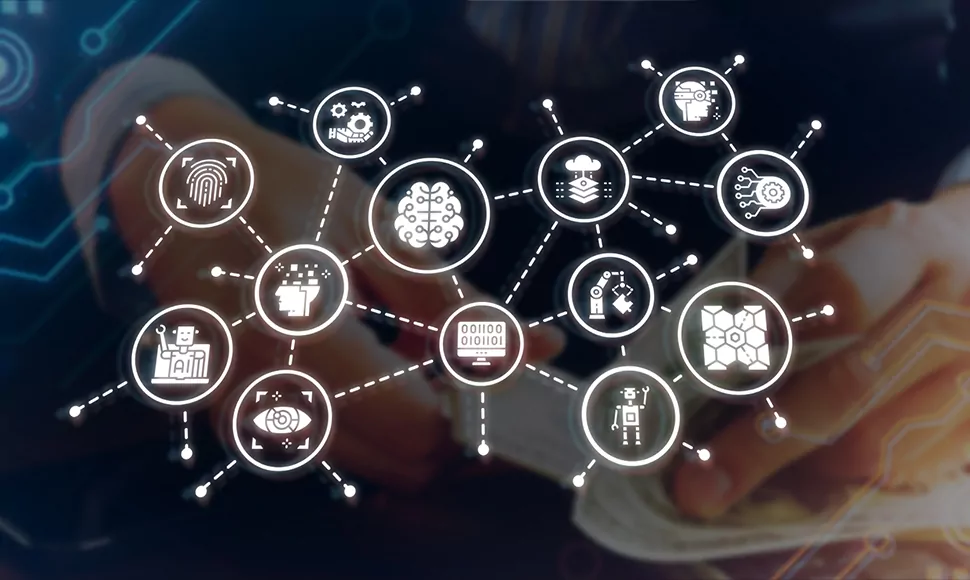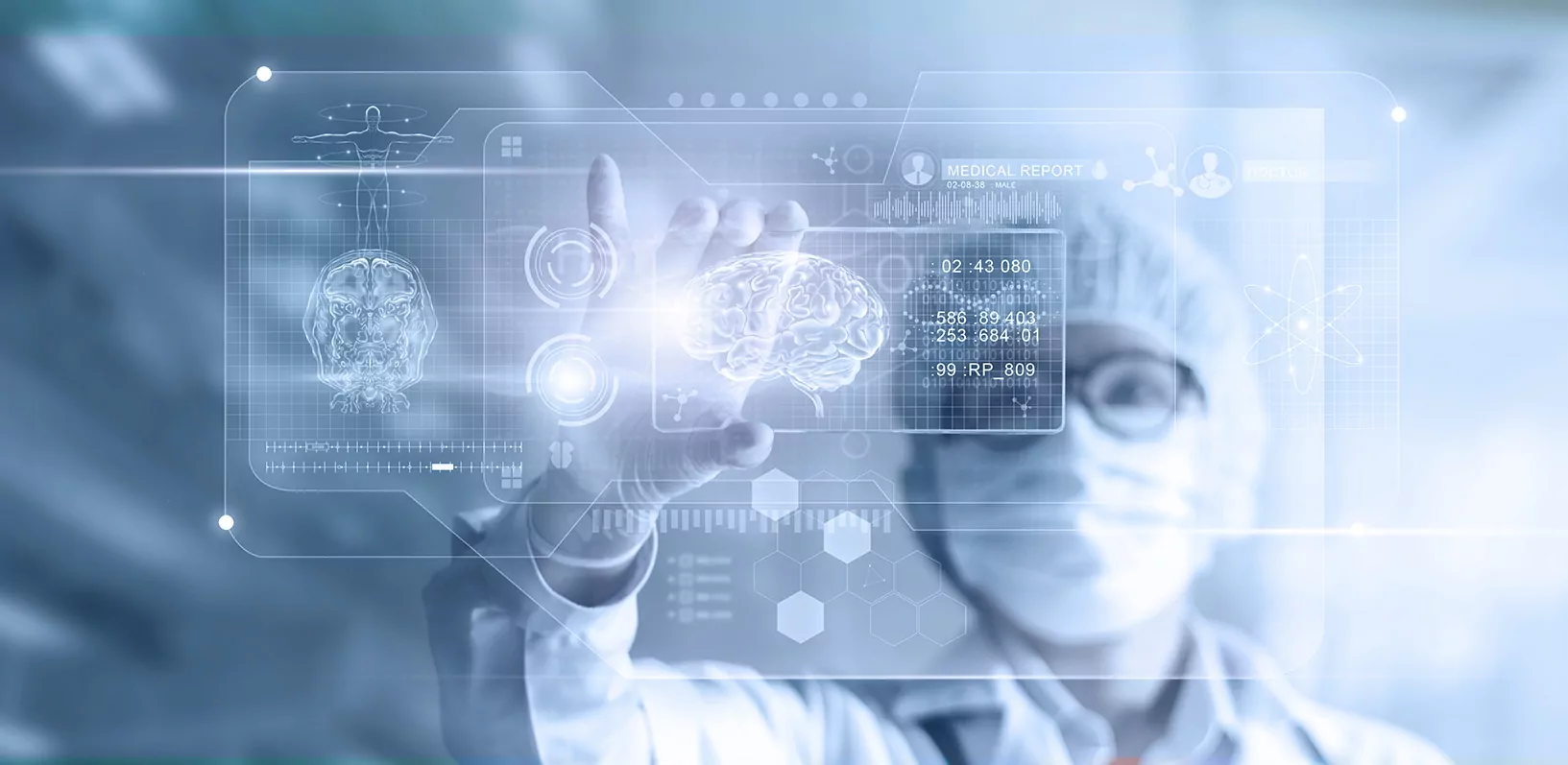Digital transformation, our old chestnut, huh?* You might be thinking about leaving the page right now, but hold your horses as today we’ll present it to you from a brand new perspective. The perspective is, yes you’ve guessed it right, artificial intelligence. The apple of our eye and something that we have full confidence in.
* If it is not yet a broken record for you, it’s time to catch up!. Below you’ll find our other articles on digital transformation that will lay solid foundations for today’s topic.
- What digital transformation is
- What artificial intelligence is
- How to measure digital transformation
- How to reduce costs with digital transformation
Why is AI in digital transformation important?
Just to clarify things, digital solutions don’t equal artificial intelligence by default. They can but they don’t have to. Saying it flat out, there is no need to look for AI solutions just for the sake of it. Sometimes simply switching widely-used tools to e-tools will do the trick. However, in a lot of cases, artificial intelligence is the way to push the envelope and expand your business.
Examples of artificial intelligence solutions in digital transformation
Before we get the bit between our teeth let’s spell one thing out:
How to tell AI-powered solutions from the rest?
The easiest way to find out is to determine whether they aim to mimic intelligent human behaviour and solve the problems unsolvable for traditional algorithms, the way people would. Also, through data processing and analysis, AI algorithms should be able to learn in time and get better in what they do.
Now it’s time to put all the above into practice and show you AI-based digital transformation in action. To organise it neatly, we’ve divided the topic into five areas.

Computer vision
We use artificial intelligence to detect, recognize, and identify the contents of photos and videos. Depending on the business needs and areas to be digitalized, AI focuses on:
- people and faces, as in case of entrance authentication, identifying workplace bottlenecks, determining whether employees wear protective equipment
- places, e.g. localising your workers, creating self-driving industrial vehicles, locating parcels in logistics, improving workstation ergonomics (you can delve into the topic in visual place recognition and VPR Part 2)
- objects – machinery automation (machines gaining sight), healthcare (disease diagnosis based on X-rays), pharma process automation (see our project on bacterial colony identification and counting), advanced quality control, e.g. elimination of impurities in the production processes, soil and crop monitoring for more adequate watering or fertilisation
- text – invoice and contract automation, including optical character recognition (OCR); digitalization of all documentation and other sources (paperless factory being a thing nowadays)
We’d like to point out that computer vision is widely used in manufacturing quality control, in algorithms that don’t use AI at all. Computer vision with AI is needed in cases where conventional CV can’t figure it out, such as telling air bubbles from bacteria colonies grown on Petri dishes.

Natural language processing
With natural language processing (NLP) algorithms, digital systems can identify, understand, and analyse human language. We would like to flag up the fact that it is still one of the most challenging areas of AI and the systems don’t work perfectly. However, the new Generative Pre-trained Transformer 3 (GPT-3) seems to do the trick.
With NLP, we can speed up a lot of tasks, such as:
- customer service – AI-powered chatbots answering the most common inquiries, while detection of the most sensitive cases that need an immediate reaction is possible thanks to sentiment analysis
- customer profiling offering tailored solutions automatically (increasing the chances for your offer to be accepted)
- semantic search helping employees to look for information in company files
- classification of documents and client/patient/contractor data
Data science
Every day, your business gathers a mass of data: on your customers and their journey, operations, employee effectiveness, etc. Data science aims at uncovering intricate patterns that can help businesses to improve their processes, and eventually grow. The areas worth mentioning are:
- forecasting – route planning in logistics, management of orders, forecasting the interest in particular products at a given time e.g. at Christmas, during the holiday season
- risk reduction – risk analysis, predictive maintenance in manufacturing
- operation efficiency improvement – bottleneck identification, resource management, waste reduction
- recommender systems in e-commerce and well-targeted, more effective product marketing strategy
Similarly to the case of computer vision, we need to emphasise that not all data science mechanisms use artificial intelligence by definition. DS involves a lot of conventional statistics before it needs to reach for AI-based algorithms.
Predictive modelling
You can use predictive modelling to forecast events, customer behaviour, or market changes. Instead of analysing historical and current internal/external data manually, algorithms can do that effectively, speedily, and, most importantly, in real-time. A couple of usage examples:
- sales volume prediction – for more effective production or store/hotel/restaurant service demand planning
- risk calculation – commonly used in banking (among others in fraud detection), the insurance industry, manufacturing (predictive maintenance), or health care for analysing patients’ medical records
Sound recognition
Sound identification algorithms might seem less spectacular and their use limited compared to the above examples. Still, you can use them successfully in the process digitalization:
- surveillance and monitoring – systems immediately detect the sound of glass breaking or any other unusual sounds, also identifying faulty machinery
- voice-controlled devices and machines in manufacturing, pharma, and healthcare, which do not require taking the gloves off
- automatic transcription and voice dictation converting your calls and meetings into text
- assisting employees and customers with disabilities such as vision impairment
As proven with the numerous examples above, artificial intelligence plays a significant role in digital transformation. It takes operations, customer support, and daily work on a whole new level and makes businesses immune, or at least prepared, to the unexpected events. Want to try AI for yourself? We’ll be happy to help (so, make sure to contact us, we’ll take you for a test drive!).





